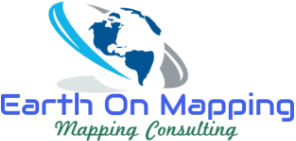- +91 901 596 5362
- info@earthonmapping.com
Corridor Classification
Utilities Corridor Mapping using lidar
LiDAR data allows to generate highly accurate 3D models for corridor mapping but also for potential risk analysis and vegetation encroachment analysis. Our 100% customizable software allows us to run specific analysis using different safety parameters for each voltage, span, pole or tower. The results of these analyses become key information for utilities, as it will allow them to manage and plan the maintenance of their network at different levels and prioritize their next steps.
From the combination of LiDAR data with our custom algorithms we can obtain safety distances from each feature of the network (poles, wires, towers, span) to any existing element within the Area of Interest (buildings, other wires, ground, roads, etc). The results from this analysis will help utilities to check if the safety distances required are being respected or violated, as well as to set different levels of infringements for further actions on the network. All this analysis can be adapted and customized depending on final client’s requirements and goals.
Utility Corridor mapping is basically used for Electricity sagging, tele-communication, oil and gas etc.
Now-a-days the mapping is doing in Photogrammetry by using UAV due to cost effective and high accuracy.
Corridor Mapping
Corridor mapping generally used for road development, railway development and Hydrological surveys etc. Its admiration measurement of the corridor using ALS, MLS & UAV in Photogrammetry as well as in LiDar. High density of points in a point cloud, a low ceiling and high-resolution digital photos from multiple perspectives enable making the inventory of the objects on the traffic lane, their visualization, measurements and the analysis of transverse and longitudinal surface slopping effect. Digital terrain model (DTM) and digital surface model (DSM), which are the results of laser scanning, make it possible to generate elevation profiles in any place and to model the nosey effects.
Transportation Mapping
LiDAR combined with imagery has an obvious advantage in route planning for new road, rail, pipe and transmission line infrastructure; however it has also proven useful in the maintenance and monitoring of existing assets and infrastructure, for example, to assess the urgency for maintenance; investigate pavement damage on roads,
Our transportation solutions, from roadways to railways to airports, have enabled our clients to fast-track project completion without sacrificing accuracy or quality. EOM regularly supports design-build efforts for major highway construction partners, including transportation departments and engineering firms.
